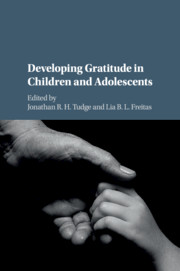Book contents
Part II - Gratitude, Developing
Published online by Cambridge University Press: 07 December 2017
- Type
- Chapter
- Information
- Developing Gratitude in Children and Adolescents , pp. 63 - 174Publisher: Cambridge University PressPrint publication year: 2017



